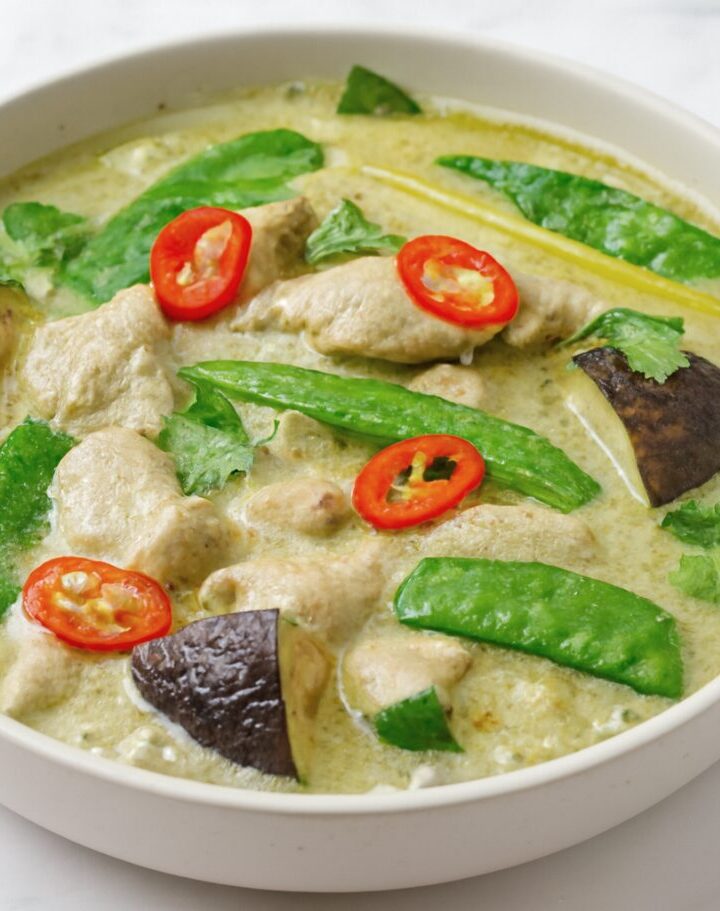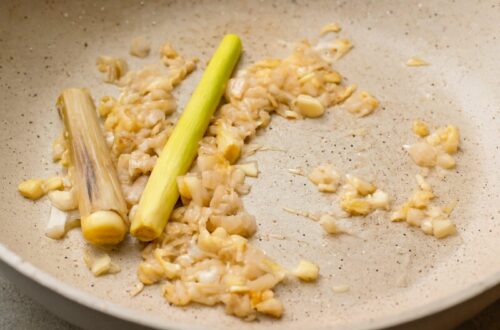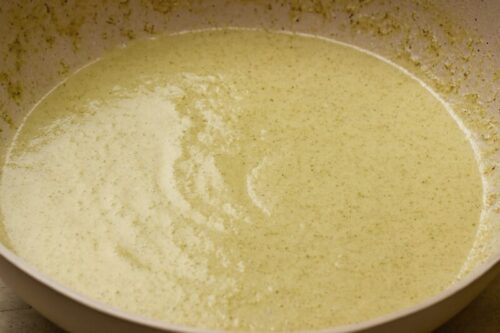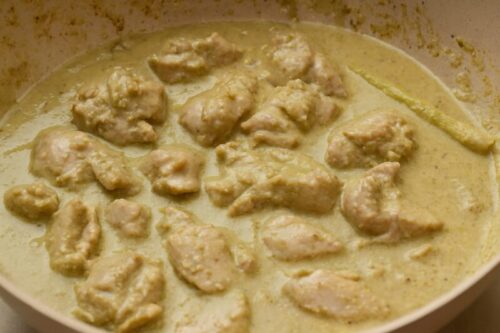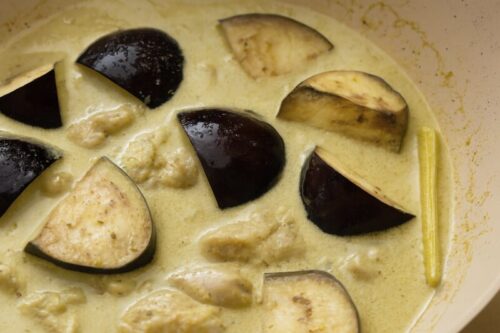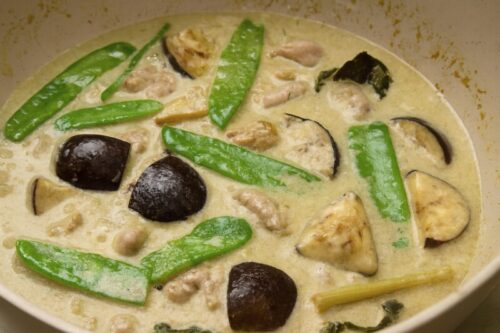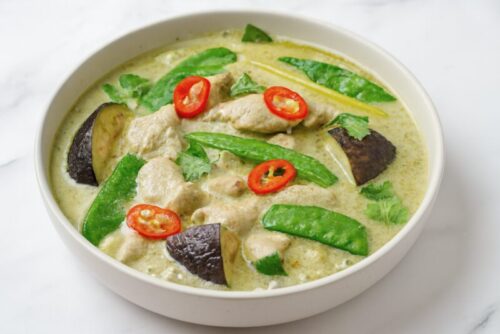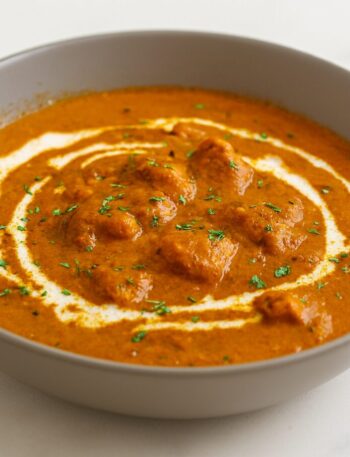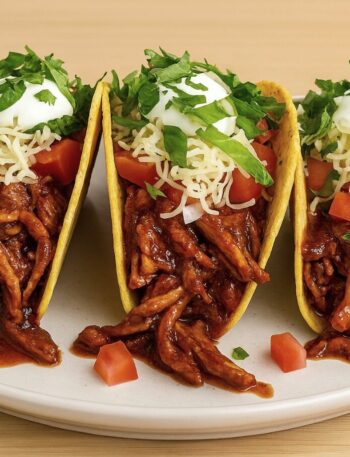Today I’m gonna tell you about my favorite dish – Thai Green Curry Chicken.
Now this dish, it’s not just creamy and spicy, but it also has this really fresh and super fragrant flavor that, like, totally lifts your mood after eating. It’s one of those meals that just hits the spot, you know?
And the best part? It’s actually super easy to make. Like, it gets ready in under half an hour, which is great when you don’t wanna spend forever in the kitchen.
And yeah, if you’re into Thai food or maybe just in the mood to try something new, then I’m pretty sure you’re gonna love this recipe. It’s got that perfect mix of comfort and kick.
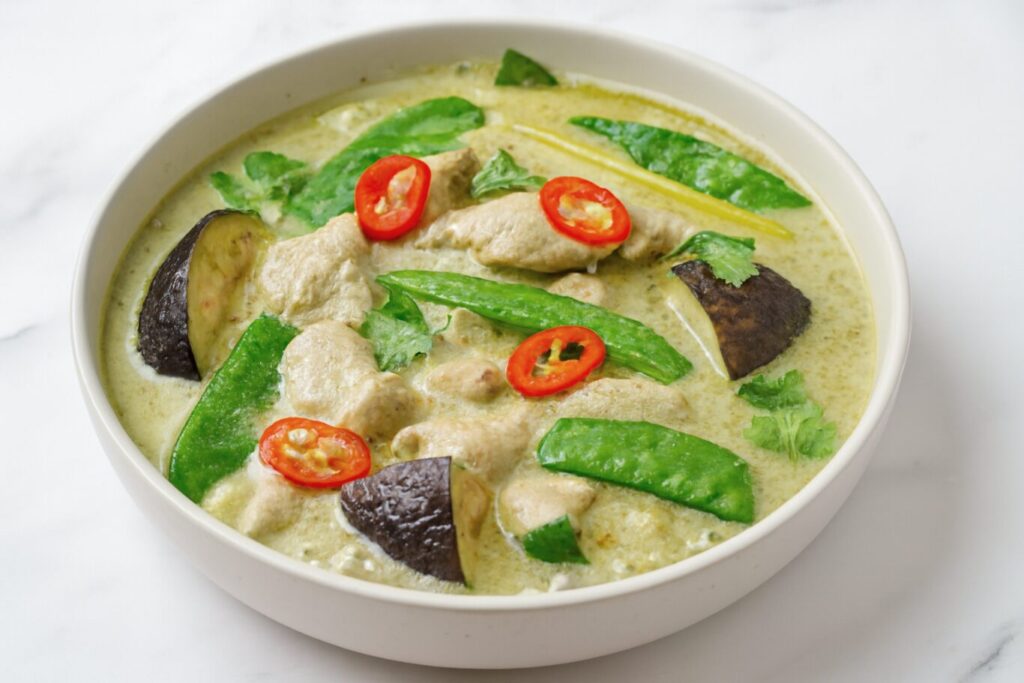
Thai Green Curry Chicken
Description
This easy Thai Green Curry Chicken is a creamy, spicy, and aromatic dish made with tender chicken thighs, coconut milk, and Thai green curry paste. It’s packed with bold flavors, comes together in under 30 minutes, and tastes just like your favorite Thai restaurant curry. It is perfect for a quick weekday dinner with jasmine rice or noodles!
Ingredients
Protein & Veggies:
For Aromatics:
For Curry Base:
For Garnish:
Instructions
- So first, take some chicken thighs or breast and cut them into medium-sized pieces ( not too big, not too small), just somewhere in the middle.

- Then, cut the aubergine (eggplant) into similar-sized chunks so everything cooks evenly.
- Now, finely chop the garlic and shallots like, really small so they blend well into the curry.
- Take the lemongrass and give it a gentle crush. Not too hard, just enough to release its flavor.
- Slice the red chili thinly, and with the kaffir lime leaves, remove that hard middle stem part because it doesn’t really soften while cooking.
- Okay, now heat some oil in a pan over medium flame. Not too hot, just enough to get things going.
- Add the lemongrass and shallots first, and stir them around for a few seconds so they start releasing their aroma.
- Then add the garlic and sauté it until it turns a light golden brown. Don’t burn it, just lightly browned.

- Now add the green curry paste and stir it for a few seconds. Once it’s mixed in, pour in half the coconut milk around 200ml.

- Let it cook for about 1-2 minutes until the sauce starts to thicken a bit. You’ll see it change texture slightly, which is what you want.
- Now add the chicken pieces and stir them for about 2 minutes so they get nicely coated with the curry paste.

- Then pour in the chicken stock, some water, and the rest of the coconut milk. Once it starts boiling, add the aubergine and let it cook for 2-3 minutes. Just enough to soften it a bit.

- Now mix in the fish sauce and sugar. This gives it that sweet-salty balance. After that, add the snow peas, bamboo shoots, and kaffir lime leaves.

- Let it all cook for one more minute and then turn off the heat.
- Finally, toss in some fresh basil leaves and the sliced red chili.
- Then, give it a good mix and taste it. If you feel like it needs a bit more fish sauce or sugar, go ahead and adjust.
- Before serving, sprinkle some chopped coriander, a few chili slices, and a squeeze of lime juice on top, just for that extra zing.

- And that’s it! Serve it hot with Thai jasmine rice or honestly, whatever rice you like. It’s gonna be good either way.
Step 1: Preparation
Step 2: Start Cooking
Step 3: Add Chicken & Veggies
Step 4: Finishing Touch
Pro Tips & Variations
Pro Tips:
- So first of all, try to use full-fat coconut milk. It just makes the curry way creamier and gives it a richer flavor overall. The light one kinda works, but it’s not the same, you know?
- Also, make sure to sauté the curry paste in oil for a bit before adding anything else. This helps bring out all the flavors and aroma properly like, it really wakes up the spices.
- It’s better to use chicken thighs instead of breast. Thighs stay soft and juicy, while breast meat tends to dry out pretty quickly, especially in curries.
- Don’t go overboard with the salt. The fish sauce and curry paste already have salt in them, so just taste as you go and adjust only if needed.
- Oh, and don’t cook the curry for too long. If you overcook it, the coconut milk might split and the veggies can get too mushy and that’s not what we want.
Variations:
- Vegetarian version: If you’re skipping meat, you can totally swap the chicken with tofu, mushrooms, or even just more eggplant. It still turns out super tasty.
- Seafood version: You can also go with prawns or fish instead of chicken. They cook faster and give a really nice flavor to the curry. Just be careful not to overcook them.
- Healthy version: If you’re watching the calories, you can reduce the coconut milk a bit and replace some of it with water or low-fat milk. It won’t be as rich, but still good.
- Extra spicy: If you like it hot, just add a bit more green curry paste or throw in some fresh green chilies. It’ll give that extra kick.
- Mild version: And if you prefer it less spicy, just reduce the amount of curry paste and maybe add a bit more sugar to balance things out. It’ll still taste great, just a little gentler on the heat.
Storage & Reheating Instructions
Storage Instructions:
- If you’re keeping it in the fridge, then first let the curry cool down completely. Don’t rush this part. Once it’s cool, transfer it into an airtight container. It stays fresh for up to 3 days like that.
- If you wanna freeze it, then just put it in a freezer-safe container. It’ll easily last for around 2 months, so that’s pretty handy.
- When you’re putting it in the freezer, make sure to leave a little space at the top of the container. That way, when the curry freezes and expands, it won’t spill or crack the lid.
- Never put hot curry directly into the freezer. It can mess up the temperature inside and spoil other stuff too.
- If you’ve got leftover rice, store it separately in another container. That way, it won’t release water into the curry and make it all soggy.
Reheating Instructions:
- For curry that’s been in the fridge, you can reheat it either in the microwave or on the stove over medium heat. Just go slow and steady.
- If the curry looks too thick while reheating, just add a splash of water or coconut milk and stir it in. It’ll loosen up nicely.
- When using the microwave, make sure to stir it once halfway through so it heats evenly. Otherwise, you’ll get hot spots and cold bits.
- Don’t overcook it while reheating, especially the chicken. It can dry out and lose that juicy texture.
- And yeah, if the flavor feels a bit flat after reheating, just add a dash of fish sauce or a squeeze of lime juice. It brings back that fresh kick.
Serving Suggestions:
- With jasmine rice: This is honestly the most classic combo. The lightly fragrant rice balances out the bold flavors of the curry really well. It’s simple but works every time.
- With steamed rice noodles: If you’re in the mood to try something a little different, then go for thin rice noodles. They soak up the curry nicely and give a slightly lighter feel to the dish.
- With a fresh salad: Just add a small side of cucumber, carrot, or lettuce salad. It makes the whole meal feel fresher and adds a nice crunch alongside the creamy curry.
- With spring rolls or Thai fried rice: If you’re planning a special dinner or want to serve something a bit more festive, then this combo is great. It adds variety and makes the meal feel more complete.
- Top it off with lime juice and a few basil leaves: This little touch at the end makes the flavor pop. It adds freshness and helps balance everything out, especially if the curry feels a bit heavy.
Nutrition Facts
Servings 3
Serving Size 1 bowl (approximately 350g)
- Amount Per Serving
- Calories 663kcal
- % Daily Value *
- Total Fat 56g87%
- Saturated Fat 31g155%
- Trans Fat 1g
- Cholesterol 99mg33%
- Sodium 1102mg46%
- Potassium 905mg26%
- Total Carbohydrate 22g8%
- Dietary Fiber 4g16%
- Sugars 11g
- Protein 23g46%
- Vitamin A 2652 IU
- Vitamin C 30 mg
- Calcium 83 mg
- Iron 7 mg
* Percent Daily Values are based on a 2,000 calorie diet. Your daily value may be higher or lower depending on your calorie needs.
FAQ
Q1. Can I use red or yellow curry paste instead?
Yes, you totally can. Just keep in mind that the flavor will change a bit. Red curry tends to be spicier, while yellow curry is usually milder and slightly sweet. So depending on what kind of taste you’re going for, you can switch it up.
Q2. What if I don’t have fish sauce?
If you don’t have fish sauce, you can use soy sauce instead. The taste will be a little different like, not exactly the same, but the curry will still turn out tasty. It’s a decent substitute when you’re in a pinch.
Q3. Which coconut milk is best to use?
Go for full-fat coconut milk, like Chaokoh or any other good brand you can find. It makes the curry creamier and gives it that rich texture and flavor. The light versions work too, but they don’t give the same depth.
Q4. What if I want the curry to be less spicy?
Just reduce the amount of green curry paste and maybe add a bit more sugar. That way, the flavors stay balanced and the heat doesn’t overpower everything. It’s a simple tweak but works well.
Q5. Can I make it ahead of time?
Yes, absolutely. You can make it a day in advance. Just store it in the fridge and gently reheat it when you’re ready to eat. The flavor stays pretty much the same, and it actually tastes even better sometimes after sitting for a bit.

